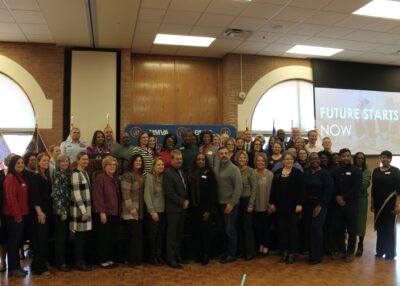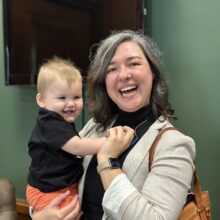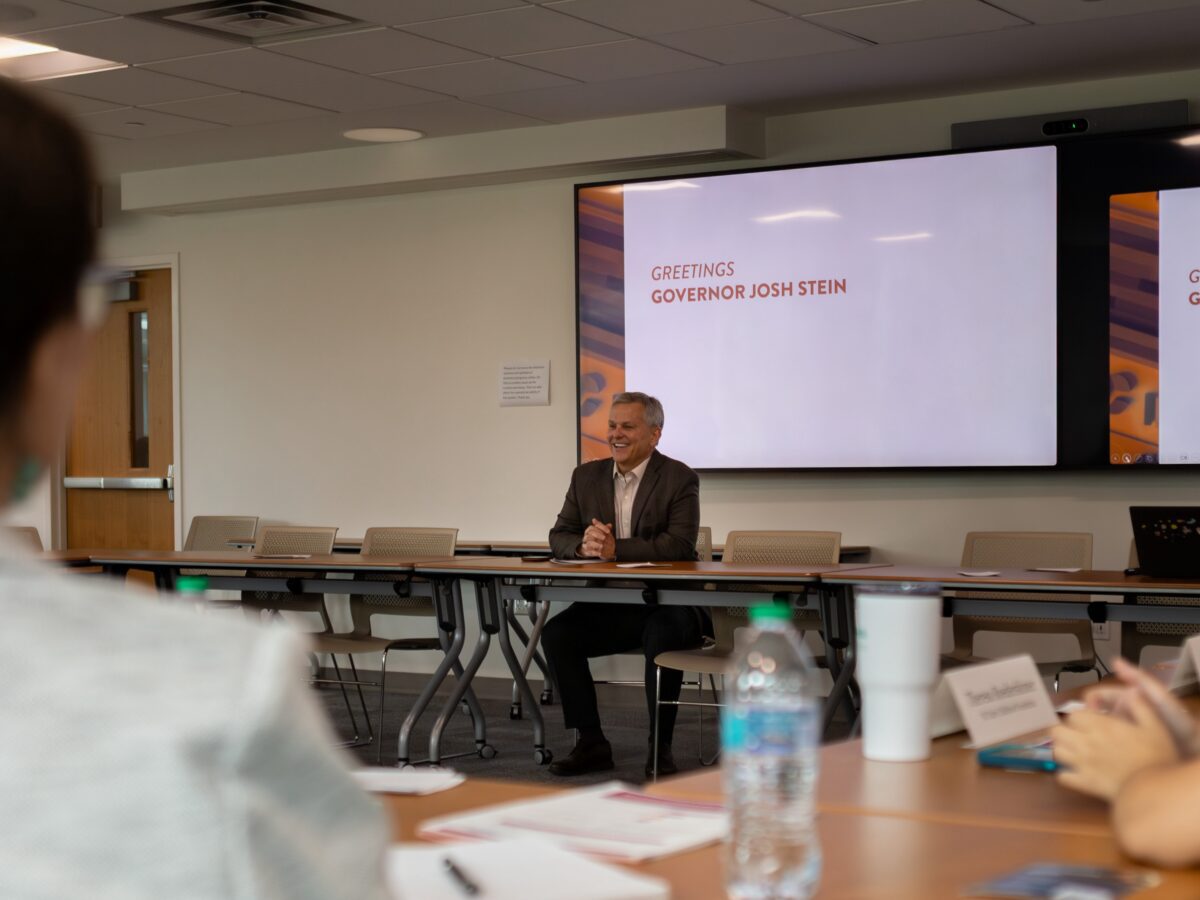
Western North Carolina’s child care network continues to recover from Hurricane Helene, which devastated the region close to a year ago. Providers shared their ongoing efforts to serve children and families with members of the North Carolina Task Force on Child Care and Early Education on Monday.
“Child care is a unique and important issue, because it’s necessary infrastructure for any recovery,” said Gov. Josh Stein, who established the task force in March to find solutions to the state’s lack of affordable child care.
![]() Sign up for Early Bird, our newsletter on all things early childhood.
Sign up for Early Bird, our newsletter on all things early childhood.
The group released its initial ideas in June to lower costs for families, support the early childhood workforce, and increase the state’s supply of programs. A comprehensive report will be released in December. The interim report’s findings and recommendations are included at the end of this article.
“(Child care) puts productive employees back in the workforce, helping businesses that are struggling to find the right people, and all of it has the benefit of stimulating our economy and helping it to continue to grow,” Stein said. “It is truly a win-win-win.”
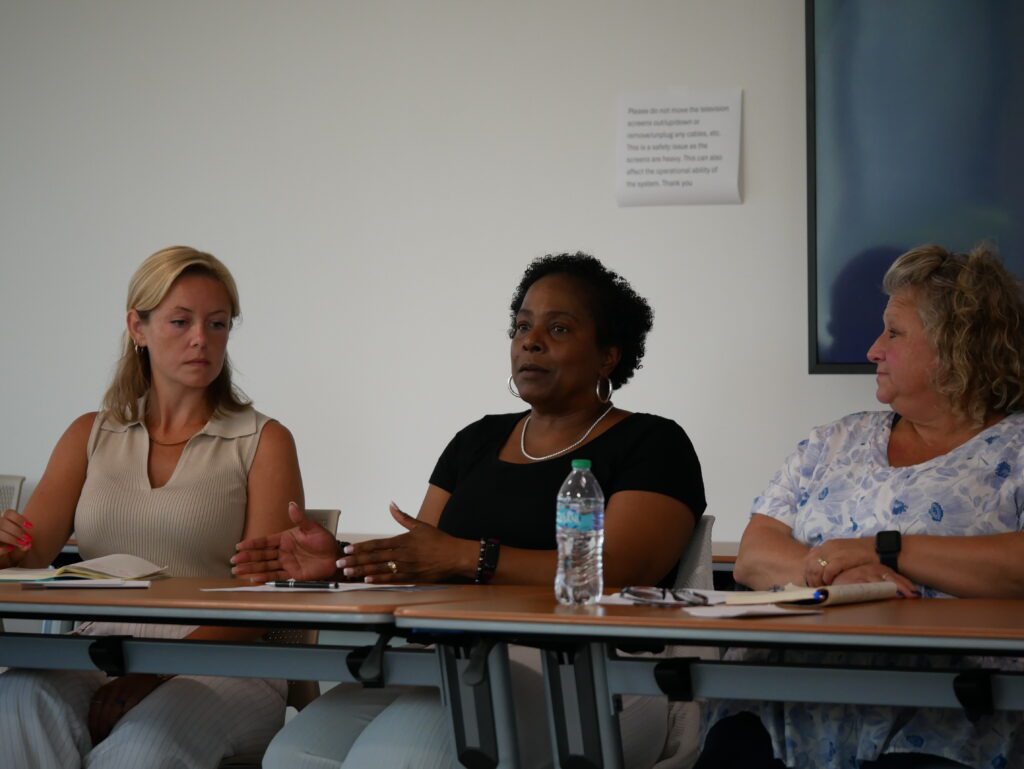
The initial recommendations include providing benefits and free child care for early childhood educators, investing in the state’s child care subsidy program, and creating child care options for public sector employees.
Funding for those items, however, is not secured. State legislators this session have not passed appropriations for advocates’ main child care requests, including $220 million each year for the child care subsidy program.
Sen. Jim Burgin, R-Harnett, said Senate leaders are prioritizing child care funding this session but have yet to convince members of the House.
“We have the will to do something about child care,” Burgin said in an interview with EdNC. “We’ve got to get our House friends and neighbors on board with doing that.”
Read more
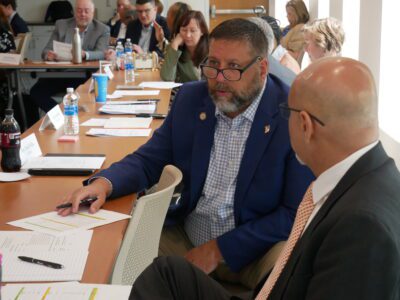
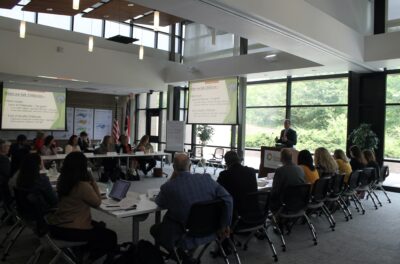
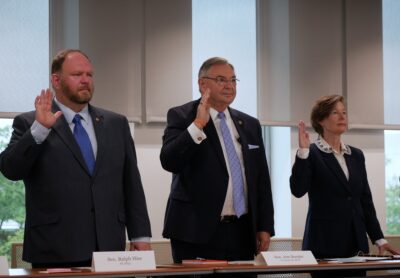
Task force members have discussed looking outside of public investment to fill the gap between the cost of providing child care and what parents can afford. One of the report’s recommendations, for example, is to create an endowment fund that could receive contributions from a variety of entities, including private corporations and foundations.
“What’s going to solve the problem is resources,” Stein said on Monday. “We need more resources to help address the issue of cost, which is so prohibitive to so many parents.”
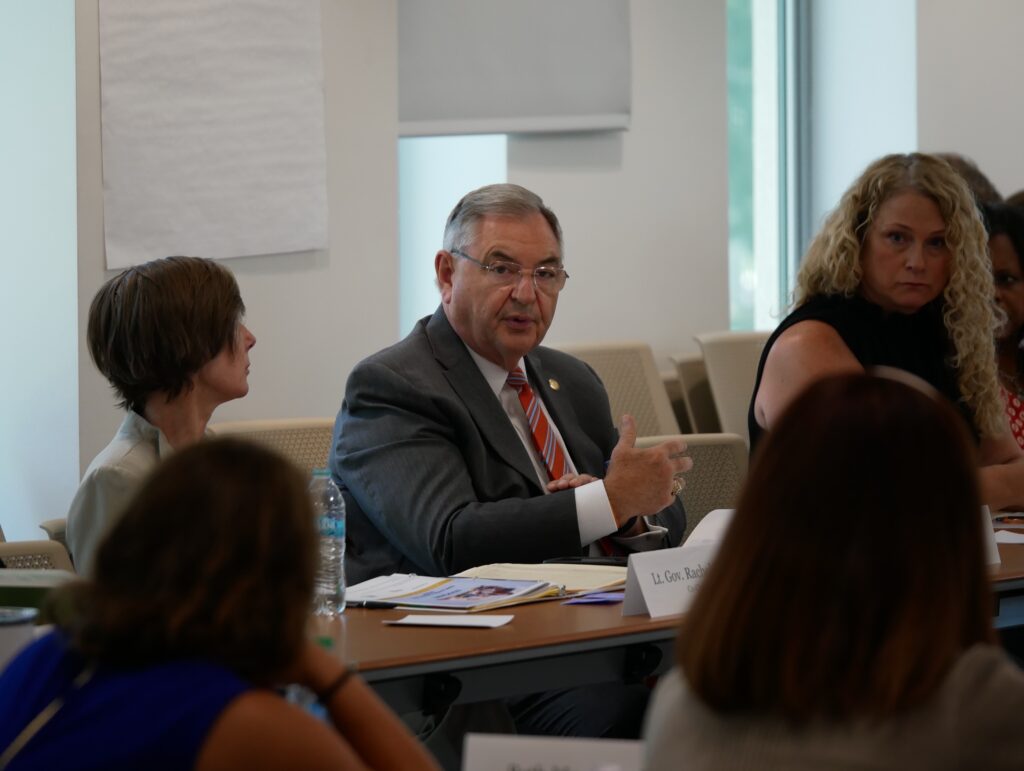
The General Assembly passed legislation in June that loosens staffing requirements for programs and credential requirements for teachers, among other components. Stein signed the bill into law.
“We have much more work to do, but this legislation takes several important steps forward,” said Burgin, who co-chairs the bipartisan task force along with Democratic Lt. Gov. Rachel Hunt.
Earlier in the session, members of the House and Senate went back and forth negotiating on the bill’s components. They received input from several early childhood organizations, including the North Carolina Licensed Child Care Association (NCLCCA).
Read more

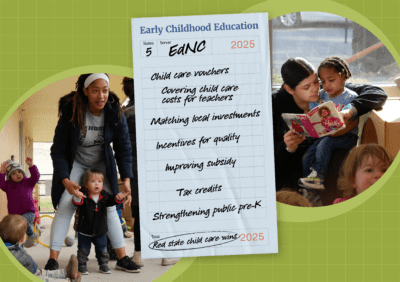

Sherry Melton, a lobbyist for NCLCCA, said at the meeting that regulatory reform can not solve the issue.
“We of course have said repeatedly, session after session, that more investment is needed, but they asked for regulatory reforms, and so we brought them everything we could think of that wouldn’t undermine quality or safety,” Melton said.
“I would just stress that there’s not a whole lot of regulatory reform that can be done to solve this problem, because staff and property are the two biggest cost drivers and barriers to supply, and you can’t deregulate property and staff costs in child care.”
An update on Helene recovery
A couple months after Helene hit, about 80% of the impacted region’s child care programs were up and running again, said Laura Hewitt, Child Care and Development Fund coordinator at the Division of Child Development and Early Education (DCDEE).
The storm impacted 148 licensed child care programs with a little more than 5,000 enrolled children, Hewitt said. At the end of July, three programs were permanently closed due to storm damage, two had serious damage but will reopen, and four programs remained temporarily relocated.
Both Cheryl Leonhardt, director of Quaker Meadows Generations in Burke County, and CiCi Weston, CEO of Christine W. Avery Learning Center in Buncombe County, described their experiences relocating children to temporary locations, finding creative ways to keep their staff compensated, and navigating the stress of licensing requirements, sanitation, and water.
Leonhardt’s staff relocated 95 of 124 young children within three weeks at local elementary schools after one of the program’s sites took on four feet of water from the storm. The program plans to reopen the site and welcome children back in August.
Weston said her program relocated children from its Swannanoa location, which sat right by the river, to its other sites in Asheville.
“Some of the staff lost their homes,” Weston said. “Some of the families lost their homes. Some families had to move because of jobs and homes being lost. Trying to shuffle those students and continue with continuity of care was a challenge to us.”
Weston’s other two sites were without access to safe water for eight weeks, she said. They had to come up with emergency water plans to reopen and serve children.
Both leaders said that reporting requirements should be streamlined and fully digitized in the case of future natural disasters and other emergencies. Weston said a lack of access to healthy food continues to be a challenge for her staff and families. They said the financial struggle of operating a child care program without pricing out families existed before the storm, and remains.
Pandemic-era stabilization funds, first provided by the federal government and then extended by the state legislature, ended in March as the region’s programs were barely surviving, Leonhardt said.
“We thought maybe that would continue, especially for the western North Carolina counties, just to help us get through trying to keep our staff and for us still rebuilding,” she said.
The state has appropriated $2.1 billion for Helene recovery so far, said Sen. Ralph Hise, R-Mitchell, out of about $62 billion in estimated needs. The state gave $10 million to the North Carolina Partnership for Children (NCPC) for child care recovery, $2 million of which has been disbursed, said Amy Cubbage, president of NCPC. Several philanthropic organizations provided immediate assistance to child care providers, including Dogwood Health Trust and Save the Children.
Local early childhood organizations, like Smart Start partnerships and Child Care Resource & Referral agencies, coordinated donations and deliveries. Lori Jones-Ruff, regional programs manager at the Southwestern Child Development Commission, organized psychological first aid training from Save the Children for providers and other state and local staff who were navigating their own traumatic experiences while coordinating recovery efforts.
“It was truly a powerhouse of partnerships in the aftermath, and continues to be so,” said Rebecca Hammond, a licensing consultant with DCDEE in the western region.
“Let’s just carry that forward and remember: power, roads, water, child care, they’re all essential to having a community rebuild,” Hammond said.
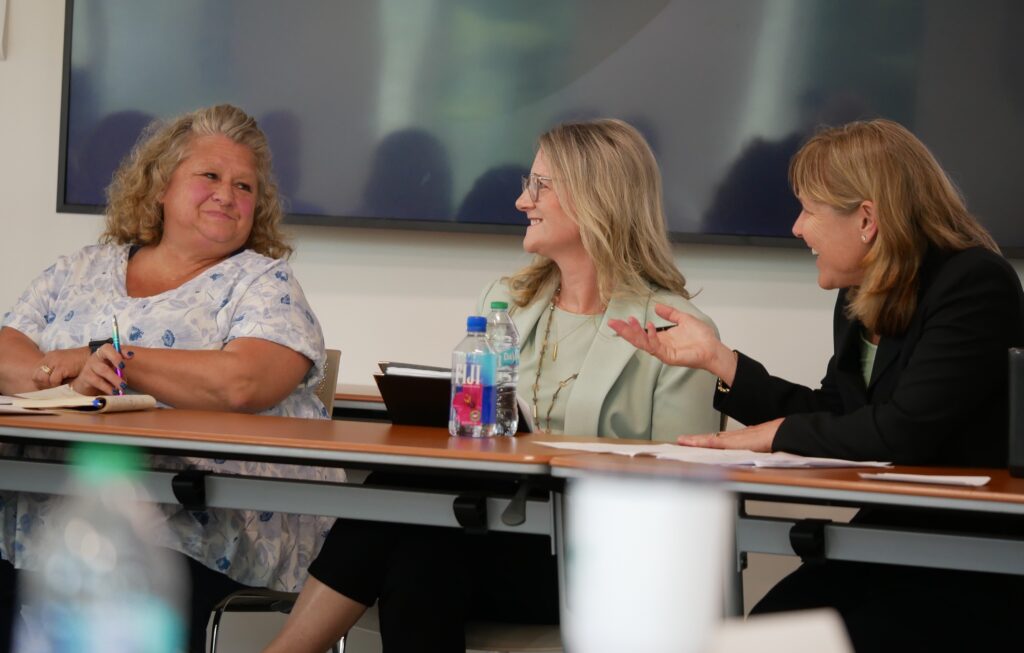
Jones-Ruff said that on top of individual child care programs having emergency preparedness plans, other organizations should create their own for better communication and coordination in the event of another disaster.
The federal government has set aside $250 million for child care recovery from the storm. Stein said his office is working to ensure the state receives its needed portion of those funds.
Rachel Shelton, engagement specialist with the WNC Early Childhood Coalition, encouraged legislators and state officials to continue to “unburden” providers by lessening their administrative burden and tending to their ongoing financial and mental health needs.
“We have a lot of centers that are really struggling, not because of their physical building… but just the economics of running this public good,” Shelton said.
Child care as an employee benefit for Harnett County’s public school teachers
An initiative from Harnett County is aimed at solving two local challenges at once: teacher turnover in its public schools, and the lack of child care.
A collaboration between Harnett County Schools and the local Smart Start partnership, Harnett County Partnership for Children, the “Educare” project would use empty public school facilities to launch a child care facility to care for children of its teachers.
The model would cover 50% of the cost, splitting a $1,000 per month rate with the parents, regardless of the age of the child. Each classroom would have two teachers, both with public school pay and benefits.
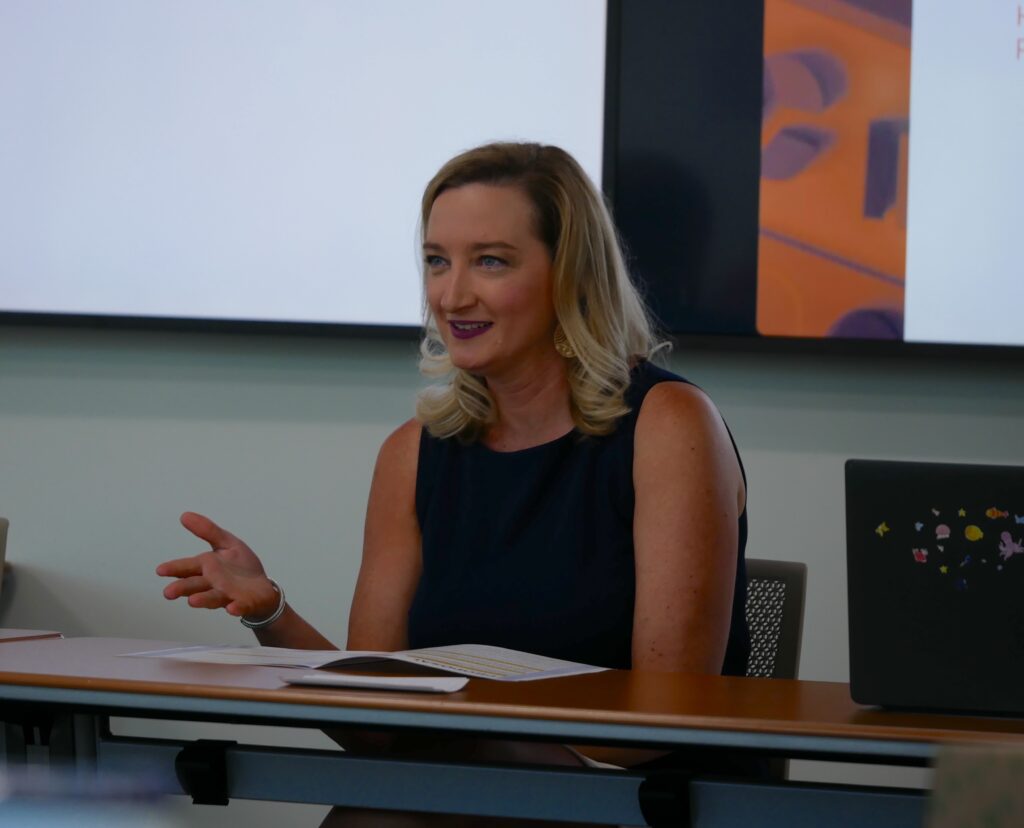
Tara Fish, executive director of the partnership, said 75% of teachers with young children who responded to a staff survey said a child care option like the model would be an incentive to stay employed at the school. Almost 90% were interested in enrolling their children. Of the teachers at the school without young children, 78% said they thought it would be successful, and almost half said they would be interested in the future.
The model would also give experience to high school students in CTE programs who are interested in becoming early childhood or K-12 teachers. The school would also work with the local community college to strengthen the local early childhood teacher pipeline, Fish said.
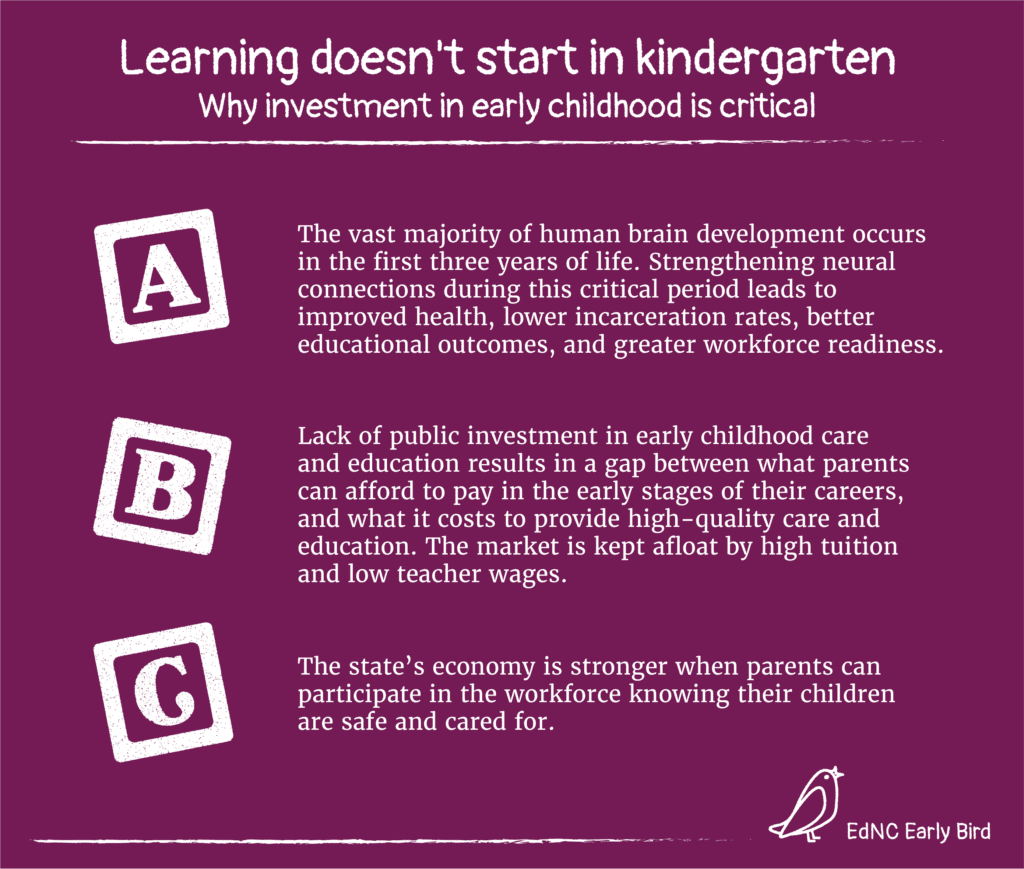
“A lot of our teachers are choosing to leave very early on in their careers, and then getting them back after their children have gone to public school is more difficult than you would think,” Fish said.
Fish and Brooks Matthews, district superintendent, said teachers are often leaving for surrounding counties like Wake that can provide higher salary supplements. The child care option would be available for any full-time employee as a benefit.
“Not only are we in child care crisis, but we need to be supporting our public school educators as well,” Fish said. “Providing them an incentive like Educare might be something, especially for small rural communities, that is very doable, that addresses both issues: teacher retention and the child care crisis.”
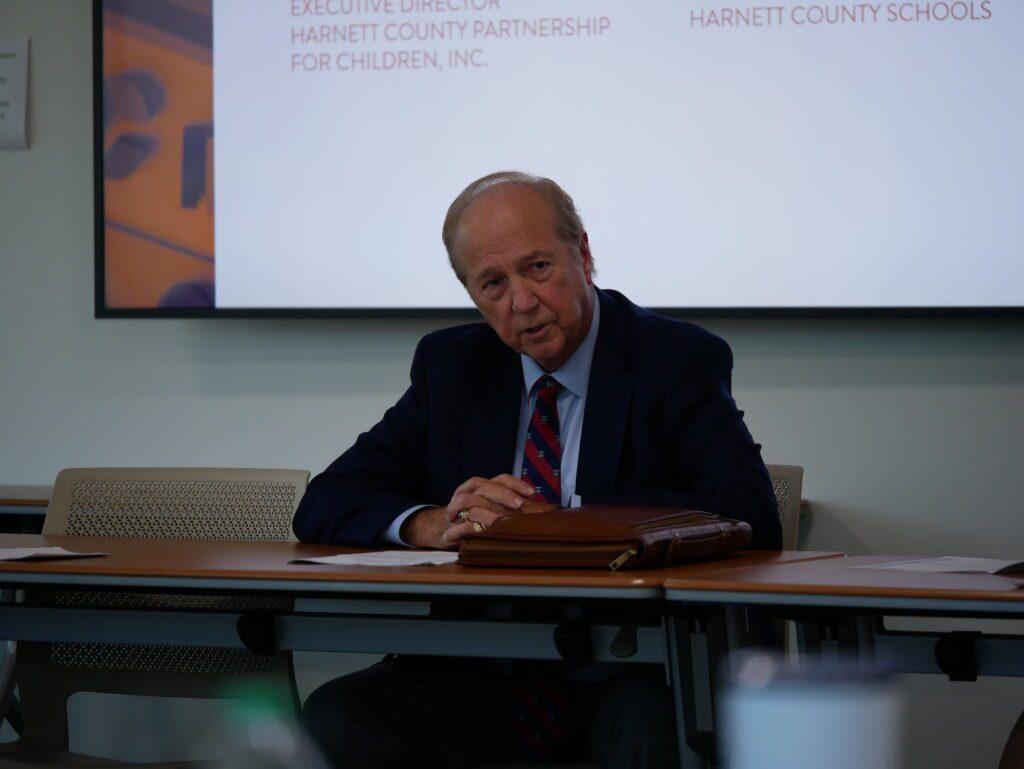
In response to a question on the potential impact to the local child care market from Sen. Hise, Fish said she did not anticipate a loss of enrollment for private programs because of the high demand and lack of supply.
Matthews and Fish are looking for funding sources to launch the project, which would serve 28 children the first year and 58 children the second. They are seeking $444,000 for the first two years of the project.
Gary Salamido, president and CEO of the NC Chamber, raised the possibility of other businesses with local employees contributing to the model.
“Two things are the barriers to work right now, it’s child care and housing,” Salamido said.
The group’s initial child care solutions
The task force released its interim report at the end of June, following its first three months of work. Here are the key findings identified in the report:
- Child care margins are thin.
- Despite the high demand for child care across the state, workforce challenges limit the overall supply of child care.
- Child care operators face pressure to keep tuition lower than the true cost of care.
- The cost of providing high-quality care is even higher for child care programs that provide specialized care like developmental day services.
- Staff retention is the greatest challenge facing child care and early education providers.
- Rural child care providers often experience additional financial strain.
- Family Child Care Homes (FCCHs) face unique challenges and dwindling numbers in North Carolina.
- Child care operators are struggling to adjust after losing Child Care Stabilization Grant funds.
- Higher child care subsidy reimbursement rates could help child care operators stay in business.
- The effects of North Carolina’s child care shortage ripple throughout our economy.
- Child care benefits are a highly effective talent acquisition tool for employers.
- Strategic partnerships can also help support child care opportunities for public sector employees.
- North Carolina is home to successful, ready-to-scale early care and education workforce programs.
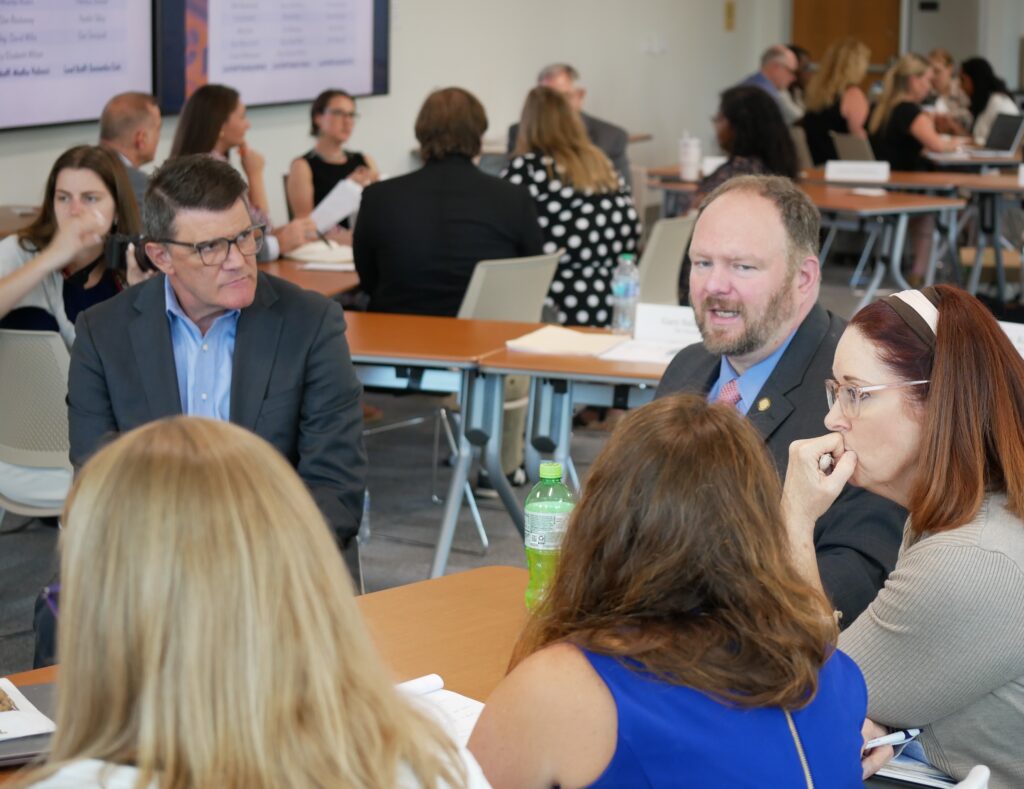
The report includes the following recommendations:
- Set a statewide child care subsidy reimbursement rate floor,
- Develop approaches to offer non-salary benefits to child care professionals,
- Explore partnerships with the University of North Carolina System, North Carolina Community Colleges, and K-12 public school systems to increase access to child care for public employees and students,
- Explore subsidized or free child care for child care teachers,
- Link existing workforce compensation and support programs for early childhood professionals into a cohesive set of supports, and
- Explore the creation of a child care endowment to fund child care needs.
The report makes it clear that these recommendations “represent some of the first steps the North Carolina Task Force on Child Care and Early Education will take toward identifying solutions that improve access to affordable, high-quality child care and early education in North Carolina.”
Over the next few months, the task force will break into work groups to focus specifically on workforce compensation and supports, finance and funding, and child care and early education for public sector workers. Their next meeting as a full group will take place Oct. 6, and their next report is due at the end of December.
Recommended reading
